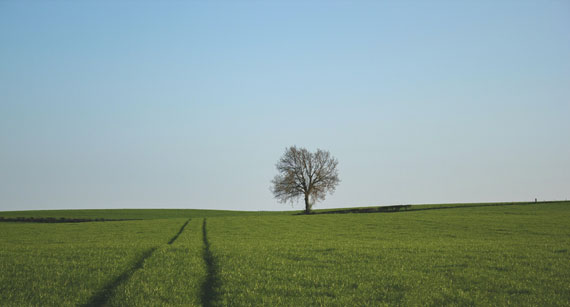Final day: only hours left for the Simply Stunning Landscapes Course at $200 Off
Landscape photography is all about capturing the essence of a place and evoking emotion in the viewer. One of the most effective ways to achieve this is by understanding and using the principles of balance and visual weight. These concepts help the photographer create harmonious compositions that captivate the viewer’s attention.

Photo captured by Martin Sanchez
1. Understanding Balance
Balance in a photograph refers to the distribution of visual elements, ensuring that no one part of the image overwhelms another. This creates a sense of equilibrium, where the viewer feels at ease when looking at the photograph.
There are two main types of balance:
- Symmetrical Balance: This occurs when both halves of an image mirror each other. Think of reflection shots, where a mountain is reflected perfectly in a still lake.
- Asymmetrical Balance: This is achieved when different elements on either side of an image have equal visual weight but are not identical. For instance, a large tree on one side might be balanced by a cluster of smaller trees on the other.
2. Grasping the Concept of Visual Weight
Visual weight refers to the ability of an element within an image to draw the viewer’s attention. Factors that contribute to an element’s visual weight include:
- Size: Larger objects typically have more visual weight than smaller ones.
- Contrast: An element that contrasts with its surroundings, either in color, tone, or texture, will stand out.
- Placement: Elements placed towards the center tend to feel heavier than those at the edges.
- Complexity: Detailed or complex subjects can draw more attention than simpler ones.

Photo captured by John Mark Arnold
3. Tips for Achieving Balance with Visual Weight
- Rule of Thirds: Place main subjects on the intersections of the dividing lines. This naturally achieves balance in many scenes.
- Use Leading Lines: Paths, rivers, or shadows can guide the viewer’s eyes through the frame, balancing out elements of visual weight.
- Incorporate Negative Space: The empty space can balance a prominent subject, preventing it from overwhelming the image.
- Pay Attention to Natural Symmetry: Reflections, shadows, and formations can provide natural ways to balance a photo.
4. The Intentional Imbalance
There are moments when an intentional imbalance can be powerful. By making one element overwhelmingly dominant, photographers can evoke feelings of loneliness, awe, or vulnerability. However, it’s essential to use this technique judiciously to avoid confusing the viewer.
Conclusion
Understanding balance and visual weight is crucial for creating compelling landscape photographs. By mastering these concepts, you’ll be better equipped to guide your viewer’s eye through your image, telling a more engaging story about the scene you’ve captured. Like all rules in art, once you understand them thoroughly, don’t be afraid to break them creatively to achieve the mood or message you’re aiming for in your work.
For Further Training:
Currently on sale until the end of the month, August 31, this course titled “Simply Stunning Landscapes” by Joshua Dunlop, founder of ExpertPhotography, offers a comprehensive guide on mastering the intricacies of landscape photography.

Simply Stunning Landscapes (see what’s covered)
What sets “Simply Stunning Landscapes” apart is its hands-on approach. Instead of confining lessons to theoretical discussions, the course offers practical insights by being shot in various European locations.
Only hours left: Simply Stunning Landscapes at $200 Off
Like This Article?
Don't Miss The Next One!
Join over 100,000 photographers of all experience levels who receive our free photography tips and articles to stay current:






Leave a Reply